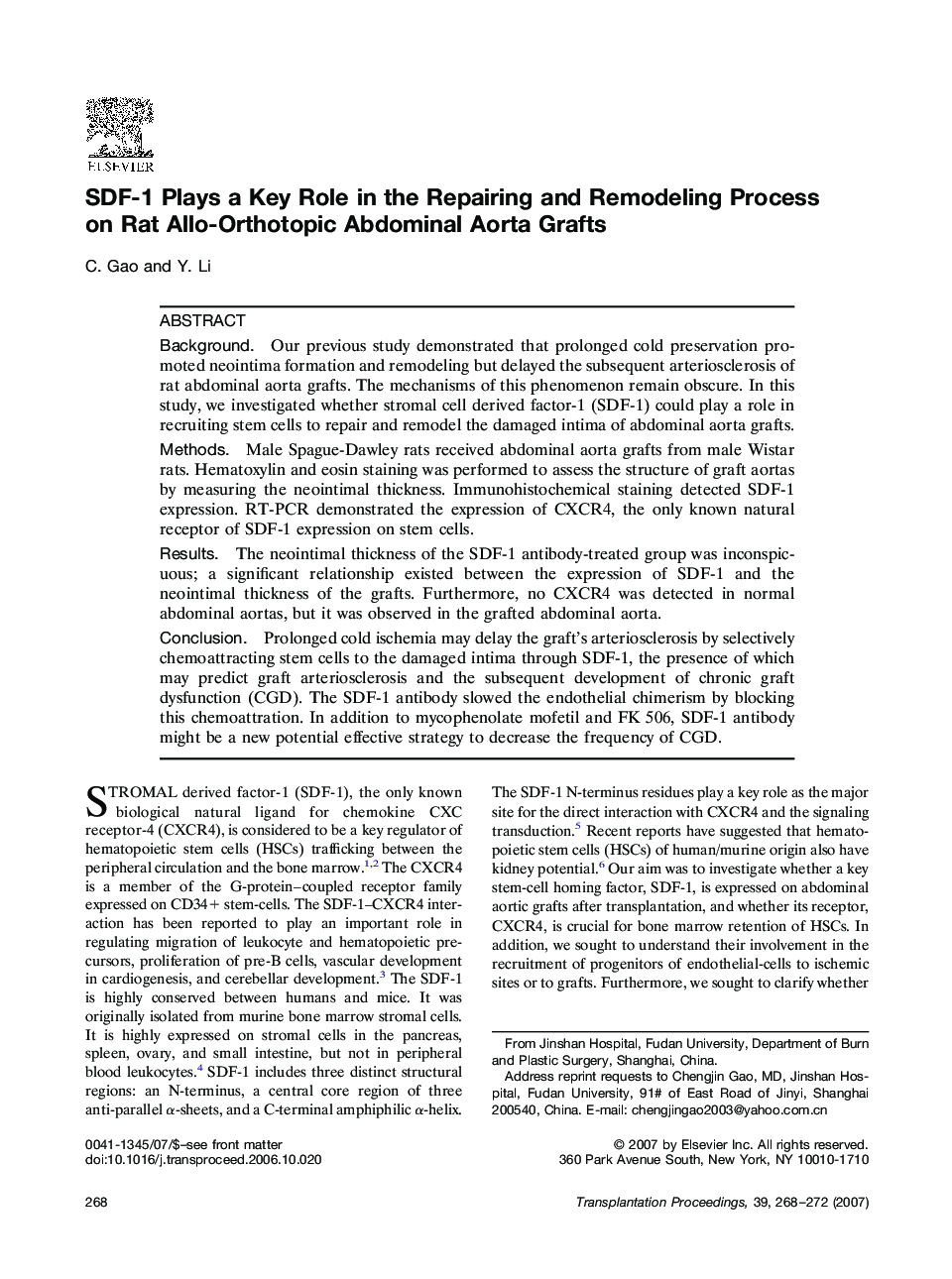| Article ID | Journal | Published Year | Pages | File Type |
|---|---|---|---|---|
| 4262956 | Transplantation Proceedings | 2007 | 5 Pages |
BackgroundOur previous study demonstrated that prolonged cold preservation promoted neointima formation and remodeling but delayed the subsequent arteriosclerosis of rat abdominal aorta grafts. The mechanisms of this phenomenon remain obscure. In this study, we investigated whether stromal cell derived factor-1 (SDF-1) could play a role in recruiting stem cells to repair and remodel the damaged intima of abdominal aorta grafts.MethodsMale Spague-Dawley rats received abdominal aorta grafts from male Wistar rats. Hematoxylin and eosin staining was performed to assess the structure of graft aortas by measuring the neointimal thickness. Immunohistochemical staining detected SDF-1 expression. RT-PCR demonstrated the expression of CXCR4, the only known natural receptor of SDF-1 expression on stem cells.ResultsThe neointimal thickness of the SDF-1 antibody-treated group was inconspicuous; a significant relationship existed between the expression of SDF-1 and the neointimal thickness of the grafts. Furthermore, no CXCR4 was detected in normal abdominal aortas, but it was observed in the grafted abdominal aorta.ConclusionProlonged cold ischemia may delay the graft’s arteriosclerosis by selectively chemoattracting stem cells to the damaged intima through SDF-1, the presence of which may predict graft arteriosclerosis and the subsequent development of chronic graft dysfunction (CGD). The SDF-1 antibody slowed the endothelial chimerism by blocking this chemoattration. In addition to mycophenolate mofetil and FK 506, SDF-1 antibody might be a new potential effective strategy to decrease the frequency of CGD.
